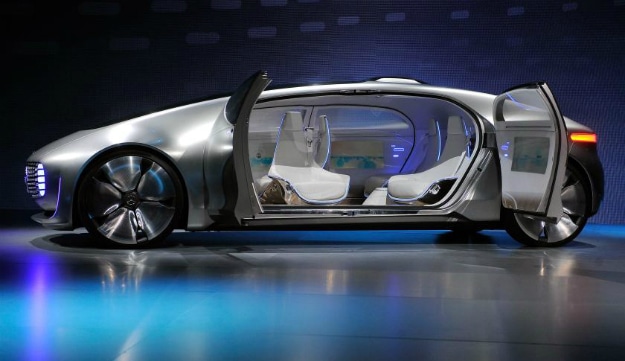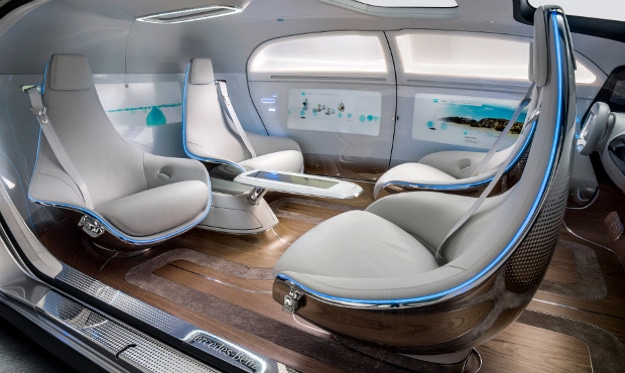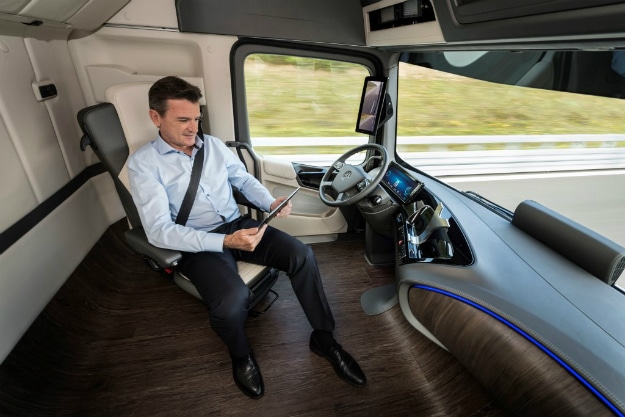There are plenty of developments in future technology that we’re all excited about. We can’t wait for Matrix alternate reality, commercial nanomachines, and anti-aging medicine – all of which are technically possible and will be rolling off factory shelves in a matter of time. The days ahead forecast many technological advances that will make human life endlessly easier and more enjoyable. Autonomous cars are just a small part of a new wave that will have positive effects for generations to come.
Google’s autonomous car has already driven over 700,000 accident-free miles on public roads, and in April 2015, Delphi’s driverless car was responsible for the first autonomous road trip to cross America from East coast to West coast.
Although this technology will have a huge cultural and economic impact on our society, there are a few obvious hurdles to overcome before we can actually buy or experience one of them ourselves.
The ideas of car ownership and car design will radically shift due to the changes that come with driverless cars. Owning or leasing a car, especially a new one, has always been a huge expense and financial risk. A car owner must either save money, borrow money, or find willing guarantors or co-signers – all on top of insurance and general maintenance.
Sure, when you’re 17 it’s fun to join the senior class parking lot of your high school, but the novelty wears off when you have to buy new tires after doing a few too many donuts. In the next few decades, driving cars will be just that: a novelty. When tens of thousands of automotive deaths could potentially be avoided each year, don’t you think it’s time to graduate from that high school parking lot and welcome autonomous cars into our lives?
The average car doesn’t get that much use if you stop and think about it. Your car takes you to work and then sits unused in a parking garage for roughly eight hours until you drive it home. And then it sits in your garage overnight. Future tech is all about making existing technology more efficient. Think about all the parking lots and garages across America: all of that wasted space, and cost for upkeep.
In the future, car ownership will be a luxury reserved solely for the upper class, for those who can afford a private car. Uber-like services are going to make it much too affordable to spend so much money on owning a vehicle.
Car design has always been built around function: front and back windshield for visibility, and headlights and taillights for visual communication. But what will become the functional design choices when the goal is to please the passenger? We will no longer need to sit facing forwards; the interior could more closely resemble the inner linings of a living room than an actual car. We could even play video games on our way to the supermarket. All thanks to the autonomous cars about to hit the roads in the future.
Smart roads are another example of future tech: in conjunction with autonomous cars, they could lead to some very exciting advancements. One example is the M4 in Australia, as it is the first of many smart roads in the country that expects a 15 minute cut in daily commutes, and one-third fewer accidents per year.
Here’s how it works: sensors have been added to every 500 meters of road that communicate to drivers about traffic flow. This reduces the cars from slowing down and speeding up by providing a synced speed with that of the merging lane.
This is pretty basic stuff in terms of making a highway “smart” but the results are impressive. Less vehicle usage means that cars will require less maintenance – which saves people time and money across the board, and is ultimately better for the environment.
If these are the results of smart roads with human drivers, just imagine the impact smart roads will have with autonomous cars. Other “Smart Highway” advancements we might see in the next decade could include glowing lines, dynamic painted lanes, electric charging lanes, interactive lights, and solar roads.
Will autonomous cars do to transportation services what Uber did to taxi companies? No, actually, they will do far worse. Uber’s biggest costs come from driver salaries; therefore, self-driving cars are seen as the perfect financial solution.
This technology obviously isn’t going to stop with Uber, as it will spread to other sectors like public transportation, postal service vehicles, trucking companies, so on and so forth. These lost jobs are going to create a massive blow to the economy – not to mention all of the other jobs that robots will be taking in the decades to come.
It is projected that over 70% of today’s occupations will become obsolete, replaced by automation. But America has certainly experienced a change like this before, The Industrial Revolution. Two hundred years ago, 70% of people lived on farms. Today, automation has eliminated all but 1% of those jobs.
One interesting outcome of autonomous cars will be the inevitable downsizing of the police force. It would be nice to believe that humans will still have a place on the force, alongside Robocop and ED-209, but if autonomous cars are the future, then what does that mean for traffic revenue? Robots don’t break the law, humans do.
A Washington Post study found that some of the towns in St. Louis County can derive 40 percent or more of their annual revenue from the petty fines and fees collected by their municipal courts. That 40% is a huge reason why many police officers even collect a paycheck every week. What will happen when that that number decreases? Will police patrol be forced to downsize?
Aside from these concerns, there are a plethora of other unanswered questions that need to be acknowledged as well: If a self-driving car crashes, then who is to blame? The car company responsible for the technology? The person in the car? Also, how safe is this technology from being hacked?
Unfortunately, it looks like we may have to wait quite a bit longer for driverless cars to become roadworthy. The road to perfecting this technology is long, though vehicles with hybrid autonomous technology will slowly lead the way to full automation. Technology like park assist, cruise control, stay lane, safe distance, and blind spot detection are all but stepping stones. At the moment, these are selling features for high-end cards, but they will soon become a standard on even the most basic models: GM, Ford, Mercedes, Audi, Honda, Hyundai, Toyota, and Lexus all plan to have partially autonomous cars on the road within the next few years.
The self-driving technology is here. Hopefully, we get to see it on the road before we are able to program it in our own personalized Matrix reality. The reality of it is, partially autonomous vehicles may be as far as some people (or states) are willing to go.
But a more connected, more efficient, and even safer driving experience is a part of our future. And we can all welcome it with open arms.
The Future Of Autonomous Cars



COMMENTS